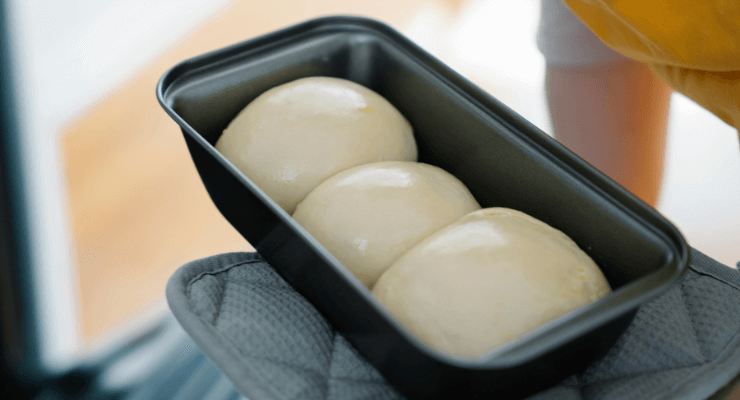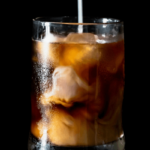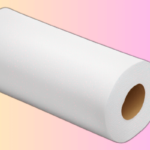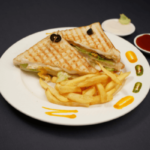Baking bread at home is one of the most rewarding experiences for any home cook. There’s nothing quite like the aroma of freshly baked bread wafting through your kitchen, and a beautifully golden loaf can make all the effort worthwhile. But achieving the perfect loaf isn’t just about following the recipe—it also depends on the equipment you use, and at the heart of it all is your bread pans for baking.

Choosing the right bread pan can make a world of difference in your baking results, whether you’re aiming for a rustic artisan loaf, a classic sandwich bread, or something more experimental like a sweet quick bread. In this guide, we’ll explore the different types of bread pans, their materials, and what factors to consider when selecting the ideal one for your baking needs.
Why Choosing the Right Bread Pan Matters
A quality bread pan is essential for even baking and achieving the right texture, crust, and shape. When you pick the wrong type of pan, you might end up with unevenly cooked bread, overly thick or too-soft crusts, and issues with loaf size or structure.
Key Benefits of Choosing the Right Bread Pan
1. Uniform Heat Distribution: A good bread pan ensures that heat spreads evenly throughout the dough, avoiding undercooked centers or overcooked edges.
2. Proper Loaf Shape: Pans are designed to maintain the bread’s shape as it rises and bakes. The right pan will give your loaf a beautiful, professional appearance.
3. Non-Stick Performance: This feature prevents the bread from sticking to the sides, making it easier to remove the loaf without damaging the crust or tearing the bread.
4. Ease of Use: The right pan will be easy to handle, durable, and suited to your kitchen setup, ensuring that baking becomes a smooth, enjoyable experience rather than a struggle.
Now, let’s delve into the different types of bread pans and what makes each of them unique.
Top 5 Best Bread Pans for Baking
Amazon Basics Rectangular Baking Bread Loaf Pan
The Amazon Basics Rectangular Baking Bread Loaf Pan (9.5 x 5 inches) comes in a set of two, making it perfect for baking bread, pound cake, meatloaf, and more. Constructed from heavy-weight steel, these pans ensure durability and even heat distribution for uniform browning. The nonstick coating allows for easy food release, making cleanup effortless.
These pans are oven-safe up to 428°F and are part of the Amazon Basics nonstick bakeware collection. Hand washing is recommended to maintain the nonstick surface, and the pans are free from harmful PFAS chemicals. Please note, they are not suitable for use under a grill.
Pros
Cons
Harvest Bounty Loaf Pan
The Harvest Bounty Loaf Pan is a genuine Bundt pan made from durable cast aluminum, ensuring crisp and intricate cake detailing. Known for its superior heat conductivity, the cast aluminum construction guarantees controlled and even browning, perfect for baking seasonal quick breads and cakes like pumpkin spice.
The nonstick interior allows for easy release and maintains the delicate patterns baked into the loaf, offering excellent baking performance. Proudly made in America since 1946, this heirloom-quality pan is built to last a lifetime. The pan measures 10.1 x 5.7 x 3.2 inches and has a 6-cup capacity, ideal for smaller loaves and detailed cakes.
Pros
Cons
USA Pan Bakeware Pullman Loaf Pan
The USA Pan Bakeware Pullman Loaf Pan with Cover is designed for baking perfect rectangular loaves like traditional pain de mie and milk bread. Measuring 13 x 4 inches, this aluminized steel pan provides excellent durability and even heat distribution.
The pan features a nonstick Americoat silicone coating, which is free from PTFE, PFOA, and BPA, ensuring quick release of baked goods and minimal cleanup. Proudly made in the USA by the Bundy family company, this versatile pan has a cover that allows for beautifully shaped, evenly baked loaves.
With its long-lasting build and easy maintenance, it’s an essential tool for home and professional bakers alike.
Pros
Cons
Farberware Bakeware Meatloaf/Nonstick Baking Loaf Pan Set
The Farberware Bakeware Meatloaf/Nonstick Baking Loaf Pan Set includes two 9-inch by 5-inch pans, perfect for baking loaves, meatloaf, and more. Constructed with heavy-duty steel and rolled rims, these pans are designed to resist warping and provide long-lasting performance.
The nonstick coating, both inside and out, ensures excellent baking results with easy food release and hassle-free cleanup. Oven safe up to 450°F, these pans offer versatility for a variety of recipes. For optimal care, hand washing is recommended to preserve the nonstick surface.
Pros
Cons
OXO Good Grips Glass Loaf Pan With Lid
The OXO Good Grips Glass Loaf Pan with Lid is made from durable, thermal-shock-resistant borosilicate glass, ensuring it can move safely from the freezer or fridge to the microwave or oven without the risk of cracking. Its 1.6-quart capacity is perfect for baking breads, pound cakes, and other treats.
The pan includes easy-to-read dimension markings (6 inches x 10 inches) and features generous handles for a safe, comfortable grip. With its BPA-free and PVC-free materials, this versatile loaf pan is microwave, oven, freezer, and dishwasher safe, making it a convenient and durable choice for any kitchen.
Pros
Cons
Bread Pan Sizes and Their Impact
The size of your bread pan plays a crucial role in how your bread turns out. Too small, and the dough will overflow; too large, and your loaf may turn out flat or under-risen. Standard bread pans come in a variety of sizes, but here are the most common ones:
– 8 x 4 inches: Ideal for smaller loaves, quick breads, or recipes that call for less dough.
– 9 x 5 inches: The standard size for most recipes. It provides a good balance for sandwich loaves and is versatile enough for a wide range of bread types.
– 10 x 5 inches and larger: These pans are suitable for larger loaves or high-rising breads, but they may require adjustments in baking time.
When following a recipe, it’s essential to match the specified pan size to avoid undercooking or overcooking your bread. If you’re unsure, it’s better to err on the side of caution and adjust baking times as necessary.
Key Considerations When Choosing a Bread Pan
When shopping for the perfect bread pan, there are a few additional features that can enhance your baking experience:
1. Non-Stick Coating
Non-stick coatings make removing bread easier and reduce the amount of grease or flour required. Not all non-stick coatings offer the same level of quality. Some wear off over time, while others may release harmful chemicals if scratched or used improperly. Look for pans labeled as PFOA- or PTFE-free if safety is a concern.
2. Handles
Pans with built-in handles make it much easier to transfer hot, heavy loaves in and out of the oven. This is especially important for larger pans or those made of heavier materials like cast iron or glass.
3. Ridged Bottoms
Some bread pans feature corrugated or ridged bottoms to promote better airflow, which results in more even baking and prevents soggy bottoms.
4. Oven-Safe Temperature
Ensure that your bread pan can withstand the high temperatures needed for bread baking. Most pans are oven-safe up to at least 400°F, but some, like silicone pans, may have lower limits. If you frequently bake at higher temperatures, choose a pan that can handle the heat.
Caring for Your Bread Pans
Proper care is key to extending the life of your bread pans. Here are some general tips:
Avoid Metal Utensils: Using metal utensils on non-stick surfaces can
scratch the coating, reducing its effectiveness and potentially introducing harmful chemicals into your food.
Hand Washing: While many pans are labeled dishwasher safe, hand washing will prolong their lifespan, especially for non-stick and aluminized steel pans.
Dry Thoroughly: For metal pans, ensure they are completely dry before storing to prevent rust.
Conclusion
Choosing the best bread pan for your needs depends on several factors: the type of bread you plan to bake, your personal preferences for materials and sizes, and any special features that can enhance your baking experience. Whether you’re a casual baker or a seasoned professional, the right pan will help you achieve consistently delicious results every time you bake.
With this guide in hand, you’ll be well on your way to finding the perfect bread pan and creating the homemade loaves of your dreams. Happy baking!
As an Amazon Associate, I earn from qualifying purchases.



